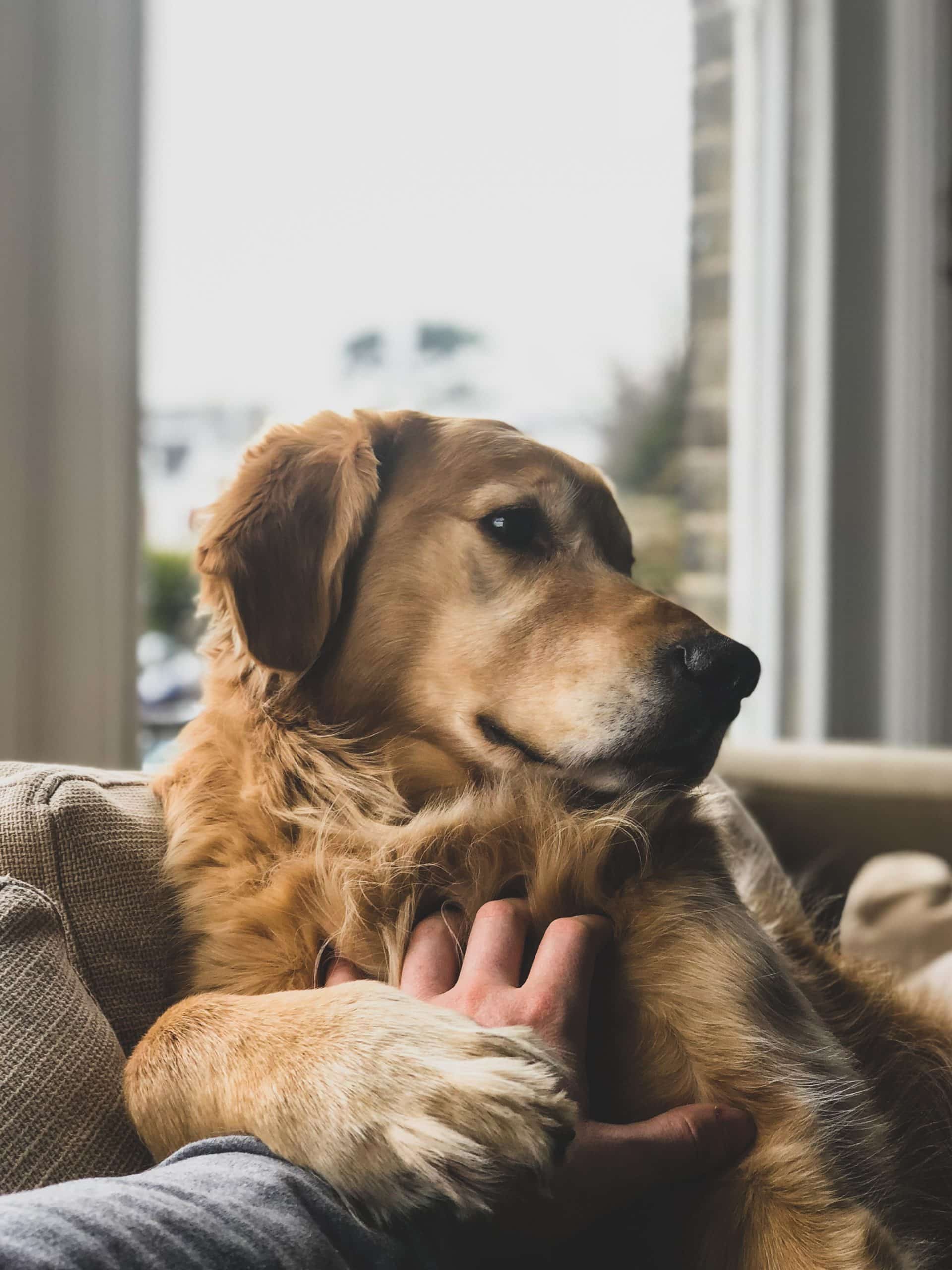As a dog owner, it's important to strike the perfect balance between indoor and outdoor time for your furry friend. Understanding your dog's lifestyle and their individual needs is key to ensuring their overall well-being. Balancing indoor and outdoor time provides them with mental stimulation, exercise, and the opportunity to socialize. In this article, we will explore the importance of finding the right balance and how it can contribute to a happy and healthy lifestyle for your dog.
The Importance of Balancing Indoor and Outdoor Time
Having a balanced lifestyle is essential for your dog's physical and mental well-being. While outdoor time provides an opportunity for exercise and exploration, indoor time is equally important for rest and relaxation. By finding the perfect balance between these two aspects, you can ensure that your furry friend leads a happy and healthy life.
The Physical and Mental Well-being of Your Dog
Regular exercise, both indoors and outdoors, is crucial for your dog's physical fitness. Outdoor activities like walking, running, and playing fetch help maintain a healthy weight, strengthen muscles, and improve cardiovascular health. Additionally, outdoor time exposes your dog to fresh air and sunlight, which promotes overall wellness.
Indoor time, on the other hand, allows your dog to unwind and rejuvenate. It provides a safe and comfortable environment where they can relax, sleep, and recharge energy levels. Just like humans, dogs also need time to rest and recover from physical exertion, making indoor time essential for their physical well-being.
Mental stimulation is equally important for your dog's overall health. Engaging your dog's mind through activities and enrichment exercises helps prevent boredom, alleviates stress, and reduces the risk of behavioral issues. Both indoor and outdoor environments can be utilized to provide mental stimulation, ensuring a well-rounded and fulfilled lifestyle for your beloved pup.
Preventing Behavioral Issues
Insufficient exercise and stimulation can lead to behavioral problems in dogs. When dogs don't get enough physical and mental activity, they may become restless, anxious, or even destructive. Regular outdoor time allows dogs to release pent-up energy, reducing the likelihood of destructive behaviors such as excessive chewing or digging.
Indoor time, on the other hand, enables you to create a controlled environment where you can address specific behavioral issues or focus on training. With a calm and peaceful space indoors, you can work on teaching obedience commands, reinforcing positive behavior, and addressing any behavioral problems that may arise.
By balancing indoor and outdoor time, you create a well-rounded routine that minimizes the risk of behavioral issues and promotes a happier, more contented canine companion.
Providing Stimulation and Enrichment
Dogs thrive on mental stimulation and enrichment. The right activities, both indoors and outdoors, can keep their minds engaged and prevent boredom. This is especially important if you have a high-energy or intelligent breed.
Outdoor time provides endless opportunities for your dog to explore new sights, sounds, and smells. Whether it's a hike through the woods or a visit to the dog park, these experiences offer mental stimulation through sensory engagement. They expose your dog to different environments, allowing them to learn and adapt to various situations.
Indoor time also offers plenty of opportunities for mental stimulation. By incorporating interactive toys and puzzles, you can challenge your dog's problem-solving skills and engage their cognitive abilities. Additionally, using scent enrichment, such as hiding treats or playing scent-based games, can keep your dog's nose busy and provide a mental workout.
Balancing both indoor and outdoor activities ensures that your dog receives the appropriate level of mental stimulation and enrichment, keeping their mind sharp and their spirits high.
Understanding Your Dog's Exercise Needs
When it comes to exercise, it's crucial to understand your dog's specific needs. Several factors, such as breed, age, and health, influence the amount and type of exercise your dog requires. By considering these factors, you can develop an exercise routine that suits your dog's individual needs.
Considerations Based on Breed
Different dog breeds have varying exercise needs. High-energy breeds, such as Border Collies or Siberian Huskies, generally require more exercise to burn off their excess energy. On the other hand, low-energy breeds, such as Bulldogs or Basset Hounds, may require less intense exercise.
Researching your dog's breed and consulting with your veterinarian can provide valuable insights regarding their exercise requirements. This information can help you tailor the exercise routine to meet their specific needs, ensuring they receive the appropriate amount of physical activity.
Age and Health Factors
Your dog's age and health also play a significant role in determining their exercise requirements. Puppies, for example, have boundless energy and may require shorter bursts of more frequent exercise. As they grow, their exercise needs change, and they require more structured and longer-duration activities.
Older dogs, on the other hand, may have decreased energy levels or physical limitations due to age-related conditions. It's essential to modify their exercise routine accordingly, incorporating low-impact activities that are gentle on their joints and muscles.
In some cases, certain health conditions may impact your dog's ability to exercise. Consulting with your veterinarian can provide guidance on how to adapt their exercise routine to accommodate any health concerns they may have.
Signs of Inadequate Exercise
Understanding the signs of inadequate exercise in your dog is crucial to ensure that their needs are being met. Dogs who don't receive enough exercise may display behaviors such as excessive barking, restlessness, or a lack of focus. They may become overweight or develop other health issues that could be prevented with sufficient physical activity.
Additionally, insufficient exercise can lead to behavioral problems, as dogs may resort to destructive or attention-seeking behaviors when they are not adequately stimulated. Regular exercise helps channel their energy in a positive way and prevents these behavioral issues from arising.
Observing your dog's behavior and energy levels can provide insights into whether they are receiving enough exercise. Adjusting their routine accordingly will help keep them happy, healthy, and well-balanced.

This image is property of images.unsplash.com.
Creating a Daily Exercise Routine
A consistent and structured daily exercise routine is essential for maintaining your dog's physical health and mental well-being. By setting aside dedicated exercise time, choosing suitable activities, and incorporating mental stimulation, you can ensure that your dog receives the physical and mental activity they need to thrive.
Setting Aside Dedicated Exercise Time
To create a consistent routine, it's crucial to set aside dedicated time for exercise each day. This ensures that your dog receives regular physical activity and mental stimulation.
Depending on your dog's breed, age, and energy level, the amount of exercise they need may vary. However, a general guideline is to aim for at least 30 minutes to 1 hour of moderate to high-intensity exercise per day for most dogs. Some high-energy breeds may require even more.
Divide the exercise time into multiple sessions throughout the day if necessary, especially for puppies or dogs with higher energy levels. This prevents them from becoming overly tired or restless.
Choosing Suitable Activities for Your Dog
The activities you choose for your dog should align with their breed, age, and overall fitness level. Consider their individual preferences and abilities when selecting exercises, as this will help keep them engaged and motivated.
For high-energy dogs, activities like running, hiking, or playing fetch can provide the necessary physical exertion. These exercises burn off excess energy, keeping them mentally and physically content. Low-impact activities like swimming or short walks may be more suitable for older dogs or those with physical limitations.
Engaging in interactive play, such as tug-of-war or hide-and-seek, is another great way to combine exercise and mental stimulation. These activities allow your dog to use their problem-solving skills and provide an outlet for their natural instincts.
Incorporating Mental Stimulation
In addition to physical exercise, it's important to incorporate mental stimulation into your dog's daily routine. Mental exercises keep their minds sharp, prevent boredom, and enhance overall well-being.
Training sessions are an effective way to engage your dog's mind. Teach them new tricks or obedience commands, reinforcing positive behavior through positive reinforcement. This not only provides mental stimulation but also strengthens the bond between you and your furry companion.
Introducing new toys and puzzles regularly is another great way to provide mental enrichment. Treat-dispensing toys or puzzle games that require problem-solving can keep your dog entertained and mentally engaged.
By combining physical exercise with mental stimulation, you can create a well-rounded daily routine that promotes your dog's overall health and happiness.
Designing the Perfect Indoor Environment
Creating a safe and comfortable indoor environment for your dog is crucial to ensure they have a relaxing and stress-free space. By providing interactive toys and puzzles and utilizing scent enrichment, you can enhance their indoor experience and keep them mentally stimulated even during their downtime.
Creating a Safe and Comfortable Space
When designing your dog's indoor environment, it's important to create a space where they feel safe, secure, and comfortable. Provide a designated area for them to relax and sleep, such as a cozy dog bed or a crate. This allows them to have a sense of their own space, promoting relaxation and rest.
Remove any potential hazards from the indoor environment, such as toxic plants or items that could be ingested or pose a choking risk. Ensure that the space is well-ventilated, with access to fresh water and a suitable temperature to keep your dog comfortable.
Providing Interactive Toys and Puzzles
Interactive toys and puzzles are excellent tools to keep your dog mentally stimulated while indoors. These toys provide mental enrichment by engaging your dog's problem-solving skills and offering a reward for their efforts.
Consider a variety of toys that offer different challenges and levels of difficulty. Treat-dispensing toys or puzzle games that require your dog to figure out how to access a hidden treat can keep them entertained for hours. Rotate the toys regularly to maintain their interest and prevent boredom.
Using Scent Enrichment
Dogs have an incredible sense of smell, and using scent enrichment can provide mental stimulation indoors. Hide treats or toys around the house and encourage your dog to find them using their nose. This taps into their natural instincts and provides a fun and engaging activity.
You can also use scented sprays or diffusers to create a calming or soothing environment for your dog. Certain scents, such as lavender or chamomile, can help promote relaxation and reduce anxiety.
By designing a safe and comfortable indoor environment, providing interactive toys and puzzles, and incorporating scent enrichment, you can ensure that your dog's indoor time is engaging and enjoyable.

This image is property of images.unsplash.com.
Enhancing Outdoor Time with Your Dog
Outdoor time is not just about physical exercise; it's also an opportunity for your dog to explore new environments, socialize, and engage in interactive play. By enriching their outdoor experiences, you can provide a well-rounded lifestyle for your canine companion.
Exploring Different Environments
Variety is the spice of life, even for dogs. Taking your dog to different outdoor environments offers them new experiences and sensory stimulation. Whether it's visiting a beach, a forest, or a bustling city park, each outing provides unique sights, sounds, and smells for your dog to explore.
Allowing your dog to investigate their surroundings on walks, within safe boundaries, encourages natural curiosity and keeps their minds active. They can encounter new wildlife, encounter different types of terrain, and discover exciting scents. These experiences provide mental enrichment and prevent outdoor time from becoming monotonous.
Socializing with Other Dogs
Besides physical exercise, interacting with other dogs is an essential aspect of your dog's outdoor time. Socialization with other canines allows them to develop important social skills, learn appropriate behavior, and build confidence.
Dog parks, obedience classes, or organized playdates are excellent opportunities for your dog to interact with their furry friends. These interactions encourage positive behavior and reinforce good manners. However, it's important to monitor these interactions closely and ensure that they are positive and safe for all involved.
Engaging in Interactive Play
Outdoor time provides the perfect opportunity for interactive playtime between you and your dog. Playing games like fetch, frisbee, or tug-of-war not only offers physical exercise but also strengthens the bond between you and your furry companion. These activities allow you to actively engage with your dog, providing mental stimulation and reinforcing obedience commands.
Keep in mind your dog's energy levels and limitations when engaging in interactive play. Adjust the intensity and duration of the activities to suit their needs and avoid overexertion.
By enhancing your dog's outdoor time with new environments, socialization opportunities, and interactive play, you can create a well-rounded and enjoyable experience for them.
Weather Considerations for Outdoor Activities
Outdoor activities with your dog are highly dependent on weather conditions. It's important to consider the weather and make necessary adjustments to ensure the safety and comfort of your furry companion.
Adapting to Hot Weather
Hot weather can pose serious risks to dogs, including heatstroke and paw pad burns. During hot periods, it's crucial to adjust outdoor activities accordingly to prevent overheating.
Avoid strenuous exercise during the hottest parts of the day and opt for walks or playtime during cooler morning or evening hours. Find shaded areas to rest and provide plenty of freshwater breaks to keep your dog hydrated. Consider using protective booties or paw balms to shield their paw pads from hot surfaces.
It's important to recognize the signs of overheating in your dog, such as excessive panting, lethargy, or drooling. If these symptoms occur, immediately move your dog to a cool, shaded area and provide water. If the symptoms persist or worsen, contact your veterinarian for further guidance.
Dealing with Cold or Wet Conditions
Cold or wet weather also requires adjustments in outdoor activities. Excessive exposure to cold temperatures or wet conditions can lead to hypothermia or other health issues in dogs.
Ensure your dog is adequately protected from cold weather by dressing them in a suitable dog coat or sweater. Limit outdoor time during extremely cold conditions and provide warm shelter when necessary. Avoid walking on icy surfaces to prevent slips and injuries.
In wet conditions, consider using waterproof jackets or boots to keep your dog dry and comfortable. Wipe their paws and belly after walks to remove any potentially harmful substances, such as ice-melting chemicals or mud.
Indoor Alternatives During Extreme Weather
During extreme weather conditions, it may be necessary to modify your dog's routine and engage in indoor activities instead. This ensures their safety and well-being while still providing the necessary exercise and mental stimulation.
Indoor exercise options can include games of fetch or tug-of-war in a spacious room, using indoor agility or obstacle courses, or even teaching new tricks. Additionally, puzzle toys, treat-dispensing toys, or interactive play with you can keep your dog mentally stimulated during these periods.
By adapting to weather conditions and providing suitable alternatives, you can ensure that your dog's exercise routine remains consistent even during extreme weather.

This image is property of images.unsplash.com.
Supervising and Monitoring Outdoor Play
When engaging in outdoor playtime, supervision and monitoring are essential to ensure your dog's safety and prevent any potential hazards.
Ensuring a Secure and Fenced Yard
If your dog has access to an outdoor space, such as a yard, it's important to ensure that the area is secure and properly fenced. This prevents your dog from wandering off or encountering potentially dangerous situations.
Regularly inspect the fencing for any holes or gaps that your dog could escape through. Ensure that gates are securely closed and that any potential escape routes, such as loose boards or gaps under fences, are addressed. Regularly check for any potential hazards within the yard, such as toxic plants or chemicals.
Training for Recall and Obedience
Training your dog to have reliable recall and obedience commands is crucial when they are outdoors. A well-trained dog is less likely to engage in risky behavior or put themselves in danger.
Spend time regularly practicing recall commands and reinforcing obedience training in outdoor environments. Use positive reinforcement techniques, such as treats and praise, to encourage desirable behavior.
Identifying Potential Hazards
While outdoors, it's important to be vigilant and identify any potential hazards that could pose a danger to your dog. This includes avoiding areas with toxic plants, sharp objects, or potentially harmful substances.
Be aware of your surroundings, and steer clear of busy roads or areas with heavy traffic. Keep an eye out for other animals or potentially aggressive dogs and maintain a safe distance.
Taking proactive measures to ensure the safety of your dog during outdoor playtime allows you to enjoy quality time together without unnecessary risks.
Managing Indoor Time for Your Dog
Indoor time is equally important for your dog's well-being. By managing their indoor time effectively, you can provide the necessary routine, mental stimulation, and a calm environment for your furry friend.
Establishing a Routine for Potty Breaks
Establishing a consistent routine for potty breaks is essential for managing your dog's indoor time. Determine a schedule that aligns with their needs and ensure that they have regular opportunities to relieve themselves.
Take your dog outside shortly after meals, upon waking up, and before bedtime. Monitor their behavior for signs of needing to go, such as pacing or sniffing around. By establishing a routine, you can minimize the risk of accidents indoors and maintain good bathroom habits.
Keeping Your Dog Mentally Stimulated Indoors
Indoor time offers a chance to engage your dog's mind and keep them mentally stimulated. Incorporate activities that challenge their problem-solving skills and keep their minds active.
Training sessions are an excellent way to provide mental stimulation indoors. Teach them new tricks or obedience commands, reinforcing positive behavior. Regular practice not only provides mental stimulation but also strengthens your bond with your dog.
Interactive toys and puzzles can also be utilized indoors to engage your dog's mind. Treat-dispensing toys that require them to work for a reward or puzzle games that require problem-solving can keep them entertained and mentally stimulated.
Maintaining a Calm and Peaceful Environment
Creating a calm and peaceful indoor environment is important for your dog's overall well-being. Dogs are sensitive to their surroundings and can easily become stressed or anxious in a chaotic environment.
Limit noisy or disruptive activities indoors, especially during your dog's rest or sleep times. Provide a designated area, such as a crate or a quiet corner, where they can retreat for some peace and solitude.
Consider utilizing calming aids, such as pheromone diffusers or calming music, to create a serene atmosphere indoors. These can help reduce anxiety and promote relaxation.
By establishing a routine for potty breaks, keeping your dog mentally stimulated indoors, and maintaining a calm and peaceful environment, you can provide a fulfilling indoor experience for your pet.
The Benefits of Mental Stimulation
Mental stimulation is essential for your dog's overall well-being. Engaging their mind through various activities and exercises can prevent boredom, strengthen problem-solving skills, and enhance the bond between you and your furry companion.
Engaging in Training Sessions and Brain Games
Training sessions and brain games offer a fun and interactive way to provide mental stimulation for your dog. Teaching them new tricks or obedience commands challenges their cognitive abilities and keeps their minds sharp.
Start with simple commands and gradually increase the difficulty level as your dog progresses. Use positive reinforcement, such as treats or praise, to reward them for their efforts. These sessions not only provide mental stimulation but also strengthen the bond and communication between you and your dog.
Introducing New Toys and Puzzles Regularly
Regularly introducing new toys and puzzles is an effective way to keep your dog's mind engaged. Rotating their toys ensures that they stay interested and prevents boredom from setting in.
Choose toys and puzzles that offer different challenges and engage various senses. Treat-dispensing toys, interactive feeders, or puzzle games that require problem-solving can keep your dog entertained and mentally stimulated. These activities tap into their natural instincts and provide an outlet for their energy.
Teaching and Reinforcing Obedience Commands
Reinforcing obedience commands is not just about ensuring your dog's good behavior; it also provides mental stimulation. Regular practice of obedience commands helps keep their minds sharp, improves their focus, and strengthens their understanding of your expectations.
Revisit basic commands like sit, stay, or come, and gradually introduce more advanced commands as your dog progresses. Use positive reinforcement techniques, such as treats or praise, to motivate your dog and reinforce their good behavior.
Investing time and effort in providing mental stimulation for your dog offers numerous benefits, including improved problem-solving skills, enhanced communication, and a happier, more well-balanced dog.
Seeking Professional Help If Needed
If you face challenges in managing your dog's indoor and outdoor time or if behavioral issues arise, don't hesitate to seek professional help. Consulting with a veterinarian or dog trainer can provide valuable guidance and support to address any concerns effectively.
Consulting with a Veterinarian or Dog Trainer
When faced with challenges or uncertainties regarding your dog's exercise routine or behavioral issues, consulting with a veterinarian or dog trainer is a wise decision. These professionals have the knowledge and experience to diagnose and address any underlying health or behavioral concerns.
A veterinarian can provide insights into your dog's specific needs based on their breed, health, and age. They can also advise you on appropriate exercise levels, nutrition, and overall wellness.
A dog trainer can offer guidance on obedience training, behavior modification, and specific techniques to manage indoor and outdoor time effectively. They can help you address behavioral issues, establish a consistent routine, and ensure your dog receives the necessary physical and mental stimulation.
Addressing Behavioral Issues Promptly
Behavioral issues, such as aggression, anxiety, or destructive behaviors, require prompt attention and intervention. Ignoring these problems can lead to further escalation and pose risks to both your dog and those around them.
Seeking professional help allows you to identify the root cause of the behavioral issue and develop effective strategies for behavior modification. With expert guidance, you can address the problem promptly, promote positive behavior, and create a safer and more harmonious environment for your dog.
Receiving Guidance on Exercise and Enrichment
If you're unsure about the appropriate amount or type of exercise for your dog, professional guidance can be invaluable. A veterinarian or dog trainer can assess your dog's individual needs and provide tailored recommendations to ensure they receive the right amount of physical activity.
Additionally, professionals can offer suggestions on mental stimulation techniques and enrichment activities suitable for your dog. They can recommend specific toys, puzzles, or training exercises that appeal to your dog's preferences and abilities.
By seeking professional help, you can enhance your knowledge and understanding of your dog's needs, address any concerns effectively, and provide a well-rounded lifestyle that promotes their overall well-being.
Finding the perfect balance between indoor and outdoor time is vital for your dog's physical and mental well-being. By ensuring they receive the appropriate exercise, mental stimulation, and a safe environment, you can provide a fulfilling and enriched lifestyle for your four-legged friend. Remember to tailor their routine to their individual needs and consult with professionals when needed. With your love and care, your dog will thrive and lead a happy and healthy life.


